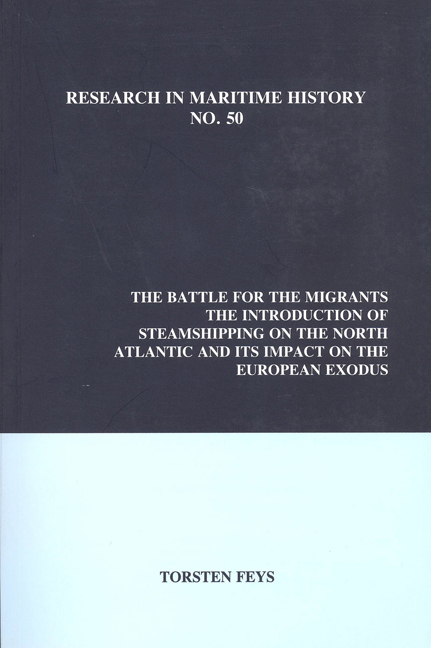 The Battle for the Migrants
The Battle for the Migrants Part I - State Policies and Their Influence on the Connections between Maritime and Migration Networks, 1830-1870
Summary
Transatlantic migrants have relied strongly on existing trade routes. The paths they used were embedded in pre-existing commercial networks which, as restrictions to migrate decreased, embraced this new trade. Merchants quickly observed the profitability of transporting human cargoes during the first noncolonial mass migration movement of Germans to the United States in the eighteenth century and used their commercial networks to set up the so-called “Redemptioner System” to facilitate this pioneer migration. These transatlantic networks connecting donor with recipient regions converged in ports where competition for the carriage of migrants was concentrated. This contest among carriers intensified during the nineteenth century as migrant flows increased. Ships on the North Atlantic bringing grain, sugar, tobacco timber and cotton to Europe often sailed westbound in ballast. Migrants therefore constituted an especially valuable commodity that drew ships to emigration gateways. As the business of human relocation business attracted other trades, hence contributing to a port's general development, some authorities began to develop policies to direct migrants to travel via certain routes. Migration policies in turn became integrated with maritime policies, especially with the opening of transatlantic steamship lines from the 1840s onwards.
In this study we will pay special attention to the failures and successes in establishing these connections and in attracting migrants. By contrasting Antwerp with Rotterdam within the broader context of the Hamburg-Le Havre range of Western European ports we will be able to study the impact of commercial networks on the path dependency of migrants. Moreover, we will be able to examine the organization of the transport mode and the influence of government policies during both the age of sail and the steamship period that followed. The use of the correspondence of French, Bremen, Dutch and Belgian diplomats in the United States sheds new light on how the trade in migrants affected ports’ competitive positions during the steamship era.
Origins
As Nicholas Canny has argued, the demand for labour demand by itself is not enough to trigger in-migration. Instead, no major migration movement takes place until it becomes profitable for the owners of the carriers of human cargo to make the connection between supply and demand.
- Type
- Chapter
- Information
- The Battle for the MigrantsThe Introduction Of Steamshipping On The North Atlantic And Its Impact On The European Exodus, pp. 11 - 66Publisher: Liverpool University PressPrint publication year: 2012
